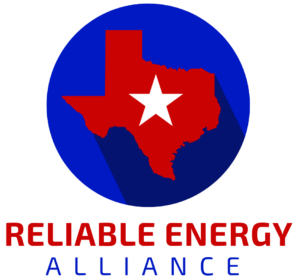REA Response
Blue hydrogen is the way forward for Texas! By harnessing the power of natural gas and implementing Carbon Capture, Utilization, and Storage (CCUS) technology, we can produce hydrogen with fewer emissions and create a reliable energy future.
Houston selected as one of 7 U.S. hydrogen hubs, opening up $1.2 billion in federal funding
The Houston Chronicle, Oct. 13, 2023
The Gulf Coast hub, which would be centered in Houston, will receive up to $1.2 billion in federal funding and is expected to be the largest of the seven hubs in terms of clean hydrogen production. It will produce both blue hydrogen, made from natural gas with carbon emissions stored underground, and green hydrogen, made by running electricity from wind and solar farms through water — a process long used by NASA to power spaceships.
“We’re looking forward to working with our friends in Texas to show how much cost savings can be achieved by scaling the technology as much as possible,” a senior administration official said, on the condition of anonymity, as the plans were not yet public.
ANNOUNCEMENT: DOE’s billion-dollar investment in Houston’s clean hydrogen sector could create more than 10K jobs
President Joe Biden and Energy Secretary Jennifer Granholm were scheduled to make a formal announcement on the hydrogen hubs Friday at a port in Philadelphia, one of the other locations selected. Other hubs to be announced are in California, the Appalachian region, the Midwest, the Northern Plains and the Pacific Northwest, with $7 billion in funding to be distributed across the seven locations.
In March, the Department of Energy selected three Texas hydrogen proposals, including two in Houston, to submit applications for the funding.
The three included HyVelocity Hub, a group that included Exxon Mobil, the University of Texas at Austin, French gas supplier Air Liquide, California-based oil major Chevron, the nonprofit Center for Houston’s Future and GTI Energy, a research and development company based in the Chicago area; a consortium made up of the University of Houston, the Southern States Energy Board, the National Energy Technology Laboratory, Marathon Petroleum subsidiary MPLX and chemical companies INEOS and Linde; and a group led by the Port of Corpus Christi.
On Friday morning, HyVelocity announced their project had been selected and they would work to “leverage the world’s largest concentration of existing hydrogen production and end-use assets in Texas and Southwest Louisiana.”
The expectation within the administration is that clean hydrogen will allow the decarbonization of heavy industries such as cement and steel, along with long-haul trucks and cargo ships, sectors that are likely to prove difficult to power with renewable energy.
The decision follows a yearlong-plus effort by Texas politicians, business leaders and academic institutions to land one of the hubs, with hopes of developing the Gulf Coast into a center for clean hydrogen the same way it is for the refining of petroleum-based fuels.
The Gulf Coast already possesses the bulk of the nation’s hydrogen infrastructure, converting natural gas to hydrogen through a carbon-intensive process necessary to the refining of oil. The plan now is to clean up those facilities by capturing their emissions and storing them in old oil fields beneath the Gulf of Mexico, part of a larger plan to store industrial emissions there while also building new wind- and solar-powered hydrogen facilities.
“What we’re on the verge of is creating an entirely new industry,” Brett Perlman, CEO of the nonprofit Center for Houston’s Future, part of a coalition of energy and technology companies and universities, said in an interview last year. “We know Houston needs to decarbonize, but we also believe this is a huge economic development opportunity for the region and the state.”
The White House said the Gulf Coast hydrogen hub would create 10,000 permanent jobs and 35,000 construction jobs throughout the region.
Numerous questions continue to swirl around the Biden administration’s efforts to deploy hydrogen energy.
The Treasury Department is still working on developing rules around how projects will qualify for tax credits included in last year’s Inflation Reduction Act, which can be worth up to $3 per kilogram of clean hydrogen produced depending on the fuel’s climate impacts.
At the same time, some policymakers have questioned whether industrial companies the Biden administration is targeting as future clean hydrogen customers will be there.
A report this year by Energy Futures Initiative, a think tank founded by Ernest Moniz, energy secretary during the Obama administration, found a substantial “cost gap” between what industrial users that make up more than 90% of the existing hydrogen market currently pay and what they are likely to pay for clean hydrogen.
But with $7 billion in federal funding from Congress under the 2021 Bipartisan Infrastructure Law, along with $43 billion in private investment identified by the seven hubs selected, the Biden administration is betting those issues will be worked out.
“This president is incredibly optimistic,” said Olivia Dalton, White House principal deputy press secretary. “There’s a lot of thought and planning that has gone into this, and it’s not just the president. There’s buy in from bipartisan members of Congress.”
